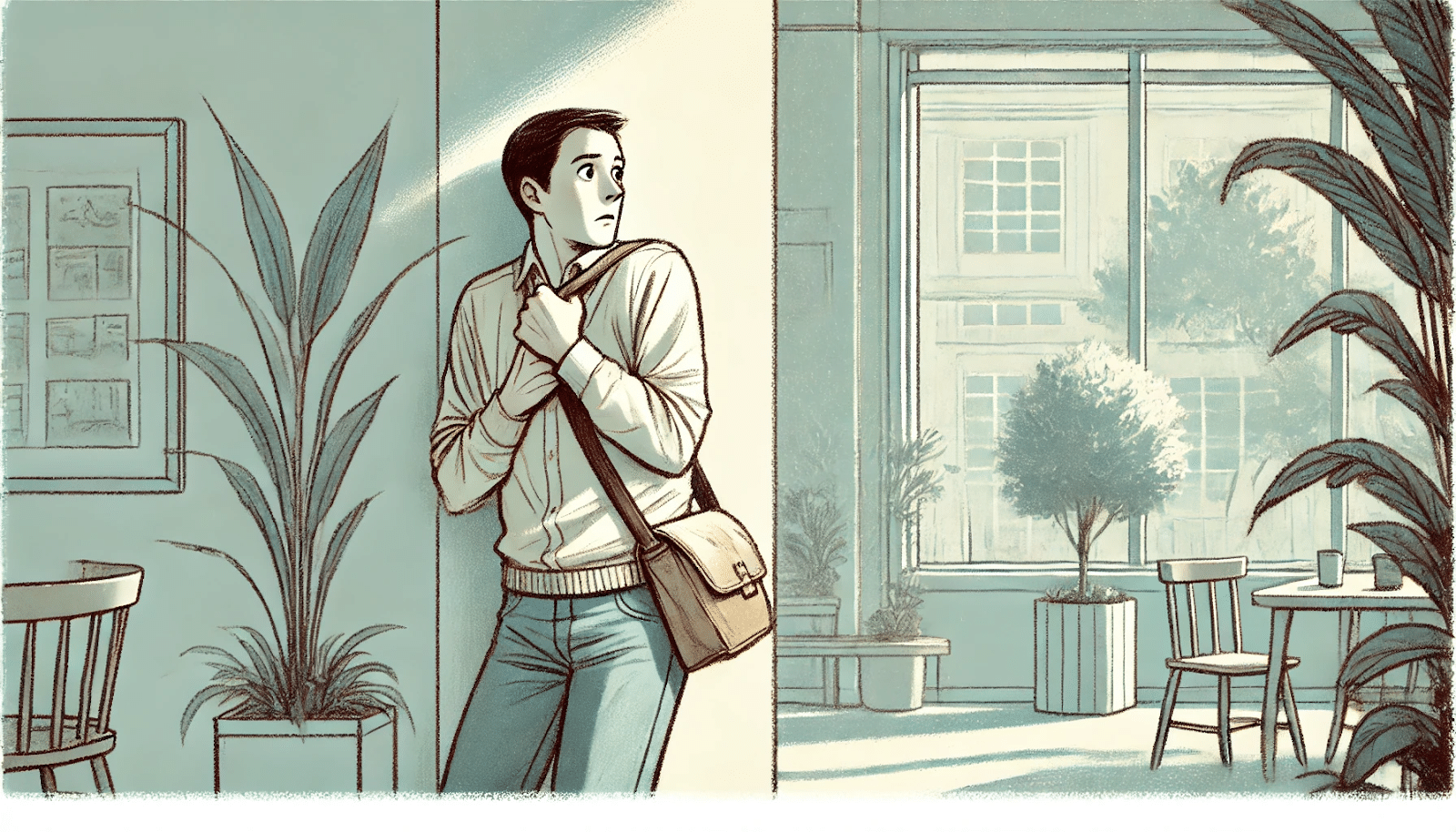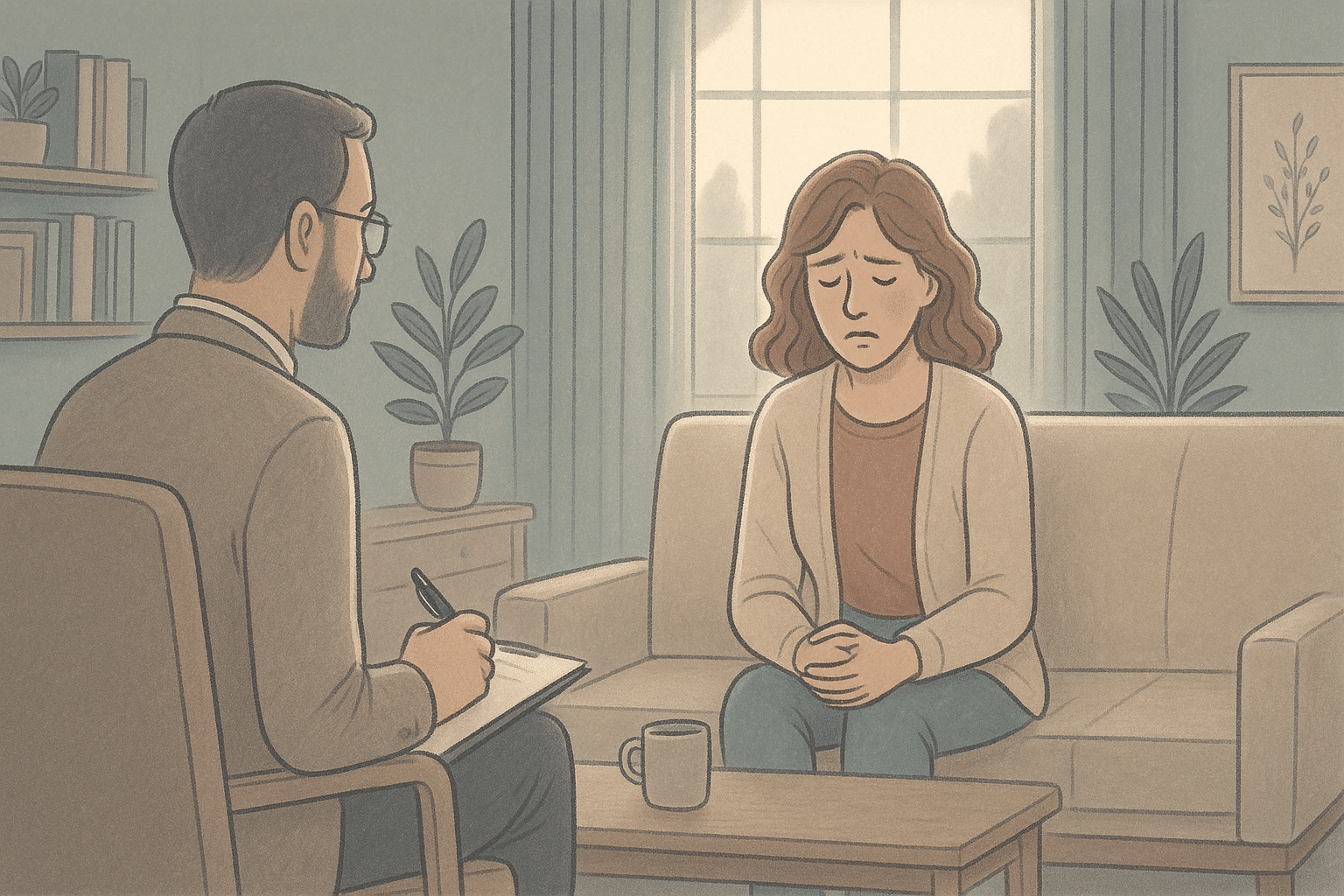Key Takeaways
- Hypervigilance is a state of heightened alertness, often linked to anxiety disorders like PTSD, where individuals are overly aware of their surroundings in anticipation of danger.
- Paranoia involves irrational and persistent feelings that others are out to get you, often accompanied by delusional beliefs.
- The key difference is that hypervigilance is based on anticipation of future threats, while paranoia is characterized by a belief in a current threat.
- Recognizing these conditions early can lead to effective management through therapy, medication, and lifestyle adjustments.
- A Mission for Michael (AMFM) offers comprehensive, personalized treatment programs for paranoia and anxiety disorder by integrating therapy, support groups, and calming techniques to help individuals rebuild trust and regain peace of mind.
Identifying Differences Between Hypervigilance and Paranoia
Hypervigilance and paranoia are often confused due to some overlapping symptoms, but they are distinct in their nature and impact. Hypervigilance is driven by anxiety about future threats, while paranoia involves delusions about threats happening now.
Immediate Indicators
One of the most immediate indicators of hypervigilance is a constant state of alertness. Individuals may seem jumpy, easily startled, and overly cautious. This heightened state of awareness is often in response to a perceived future threat.
In contrast, paranoia manifests through persistent, irrational beliefs that someone or something is actively working against you. This belief can lead to mistrust and suspicion, even in safe environments.
Common Misunderstandings
Many people confuse hypervigilance with paranoia due to their surface similarities. Both conditions can cause anxiety and stress, leading to behavioral changes. But hypervigilance is typically rooted in anxiety disorders, while paranoia can be a symptom of more severe mental health conditions, such as schizophrenia.
Another common misunderstanding is the assumption that both conditions are permanent or untreatable. In reality, with the right intervention and support, individuals can manage their symptoms and lead fulfilling lives.
| A Mission For Michael: Expert Mental Health Care Founded in 2010, A Mission For Michael (AMFM) offers specialized mental health care across Southern California, Minnesota, and Virginia. Our accredited facilities provide residential and outpatient programs, utilizing evidence-based therapies such as CBT, DBT, and EMDR. Our dedicated team of licensed professionals ensures every client receives the best care possible, supported by accreditations from The Joint Commission and the California Department of Health Care Services. We are committed to safety and personalized treatment plans. Start your recovery journey with AMFM today! |
Understanding Hypervigilance

Hypervigilance is a state often experienced by individuals with anxiety disorders.
Hypervigilance involves being excessively alert and watchful, always on the lookout for potential threats. This state of heightened awareness can be exhausting and can significantly impact daily functioning.
This condition often stems from past traumatic experiences, where the brain has learned to anticipate danger to protect itself. This response, while protective in dangerous situations, can become maladaptive when it interferes with everyday life.
Signs & Symptoms
- Constant scanning of the environment for threats.
- Difficulty concentrating due to being overly alert.
- Exaggerated startle response to sudden noises or movements.
- Physical symptoms like rapid heartbeat, sweating, and tension.
These symptoms can lead to fatigue and difficulty maintaining focus on tasks, impacting work and personal life.
Potential Triggers
Common triggers include:
- Being in crowded or noisy environments.
- Situations that resemble past traumatic experiences.
- Stressful life events or changes.
Understanding these triggers can help in managing symptoms and avoiding situations that may exacerbate the condition.
Understanding Paranoia

Paranoia is characterized by an irrational and persistent belief that others are out to harm you.
Paranoia involves persistent, irrational fears and beliefs that others are plotting against you. These beliefs are often delusional and not based on reality.
Signs & Symptoms
Here are three common signs and symptoms of paranoia:
- Persistent mistrust or suspicion of others, even without evidence.
- Feeling that others are out to harm, deceive, or exploit you.
- Interpreting harmless remarks or events as having hidden, threatening meanings.
Causes & Triggers
Paranoia is more commonly associated with severe mental health disorders like schizophrenia and delusional disorder. Having a family history of mental health issues and past traumatic events can also increase the likelihood of developing paranoia.
Comparing Hypervigilance & Paranoia
Key Differences
The primary distinction between hypervigilance and paranoia lies in the nature of the perceived threat. Hypervigilance is about anticipating potential danger, while paranoia involves a belief in an existing threat.
Additionally, individuals with hypervigilance often retain insight into their condition, recognizing that their fears may be unfounded. In contrast, those experiencing paranoia may not have this level of awareness and might believe their delusions are reality.
Common Overlaps
Both conditions can lead to anxiety, stress, and difficulty functioning in daily life. They may also result in similar physical symptoms, such as increased heart rate, sweating, and tension. Also, both conditions can be exacerbated by stress, environmental factors, and past experiences.
Misdiagnosis Risks
Misdiagnosing hypervigilance and paranoia can lead to ineffective treatment and prolonged distress. Misdiagnosis can occur due to overlapping symptoms, such as anxiety and heightened alertness.
For example, an individual experiencing hypervigilance might be misdiagnosed with paranoia if their heightened awareness is mistaken for delusional thinking. Conversely, someone with paranoia might be seen as merely anxious if their delusions are not fully explored.
Accurate diagnosis involves a thorough assessment of symptoms, triggers, and the individual’s mental health history. Collaboration between healthcare providers, patients, and their families can also aid in identifying the correct condition.
Managing Hypervigilance & Paranoia
Coping Strategies
Coping strategies play a vital role in managing symptoms and improving quality of life. Here are some effective techniques:
- Mindfulness and Relaxation: Practicing mindfulness can help individuals stay grounded and reduce anxiety. Techniques such as deep breathing, meditation, and yoga can promote relaxation and decrease hypervigilance.
- Journaling: Writing down thoughts and feelings can provide insight into triggers and patterns, aiding in self-awareness and symptom management.
- Support Networks: Building a strong support system of friends, family, or support groups can provide emotional support and reduce feelings of isolation.
Professional Help
Mental health professionals can provide a comprehensive assessment and develop a personalized treatment plan to better manage hypervigilance and paranoia. This may include therapy, medication, or a combination of both.

Therapy is often the cornerstone of treatment.
Cognitive Behavioral Therapy (CBT) can help individuals challenge and change their thought patterns, reducing anxiety and delusional thinking. Exposure therapy may also be beneficial for those with hypervigilance, as it gradually reduces sensitivity to perceived threats.
Additionally, medications, such as antipsychotics for paranoia or anti-anxiety medications for hypervigilance, can help manage symptoms and improve functioning. Regular follow-ups with a healthcare provider are crucial to monitor progress and make necessary adjustments to the treatment plan.
Lifestyle Adjustments
Incorporating lifestyle adjustments can also support the management of hypervigilance and paranoia. These adjustments may include:
- Regular Exercise: Engaging in physical activity can reduce stress and improve mood, helping to manage symptoms.
- Healthy Diet: Eating a balanced diet can support overall mental health and well-being.
- Sleep Hygiene: Establishing a regular sleep routine can improve sleep quality and reduce anxiety.
When you make these changes, you can create a supportive environment that fosters resilient mental health.
Influence on Daily Life
Social Interactions

Maintaining healthy social interactions improves mental well-being, but hypervigilance and paranoia often create barriers.
Social interactions can become strained as individuals may struggle with trust and anxiety. They might avoid social situations altogether, leading to isolation and loneliness. To improve social connections, consider the following:
- Engage in open communication with friends and family about your experiences and challenges.
- Participate in social activities that feel comfortable and manageable.
- Join support groups where you can connect with others facing similar challenges.
Building a supportive network can alleviate feelings of isolation and create a sense of belonging.
Work and Education
In terms of work, individuals may find it difficult to concentrate due to constant alertness or intrusive thoughts. This can lead to decreased productivity and even hinder career progression.
In educational settings, students might struggle with participation or group work, fearing judgment or criticism from peers.
Overcoming these challenges often involves open communication with supervisors, colleagues, or teachers. By working together, they can create a more supportive environment—such as adjusting workloads, setting clear expectations, and offering flexible deadlines.
Personal Relationships
Trust is a fundamental component of any relationship, and when it’s compromised by irrational fears or heightened alertness, connections can suffer.
To nurture healthy relationships, engage in honest communication and seek support from loved ones. Therapy can also be beneficial, offering a safe space to address underlying fears, ultimately strengthening bonds and improving interpersonal relationships.
Choose AMFM for Hypervigilance & Paranoia Treatment
Understanding the differences between hypervigilance and paranoia is essential for recognizing symptoms and seeking appropriate treatment. At AMFM, we recognize that these conditions don’t define you, but they can limit your potential when left untreated.
Our specialized team provides comprehensive, evidence-based treatment for both hypervigilance and paranoia through individualized care plans that address your unique needs and circumstances.

AMFM uses evidence-based techniques to address hypervigilance and paranoia.
If you’re experiencing the exhausting state of constant alertness that comes with hypervigilance or the isolating distrust of paranoia, our therapeutic approaches—including CBT, exposure therapy, and stress management techniques—have helped countless individuals reclaim their sense of safety and trust.
We create a supportive environment in our facilities in California, Virginia, and Washington, where healing is possible.
Don’t let fear continue to shrink your world—reach out to AMFM today at 866-478-4383 for a confidential assessment, and take your first step toward a life where hypervigilance or paranoia no longer controls your experiences.
Frequently Asked Questions (FAQs)
What causes hypervigilance and paranoia?
Hypervigilance often results from past traumatic experiences, such as military combat or personal assaults. It can also be triggered by chronic anxiety and stress. Paranoia, on the other hand, is more commonly associated with severe mental health disorders like schizophrenia and can be influenced by genetic factors.
How are hypervigilance and paranoia treated?
Treatment for hypervigilance and paranoia typically involves a combination of therapy, medication, and lifestyle changes. In addition to professional treatment, implementing coping strategies like mindfulness, journaling, and building a support network can significantly improve outcomes.
Can someone have both conditions?
Yes, an individual can experience both hypervigilance and paranoia. The conditions can coexist, particularly if there is a history of trauma or severe mental health disorders. A comprehensive treatment plan that addresses both conditions is essential for effective management.
How do I know if I need professional help?
If hypervigilance or paranoia significantly impacts your daily life, relationships, or ability to function, seek professional help. Mental health professionals can provide a thorough assessment and develop a personalized treatment plan to address your specific needs.
How does AMFM approach treatment for paranoia and anxiety disorders?
AMFM takes a whole-person approach to treating paranoia and anxiety disorders by creating personalized treatment plans that address the specific causes and manifestations of your condition.
Our comprehensive care includes a combination of therapeutic techniques (such as CBT and EMDR), medication management if necessary, and lifestyle adjustments.












